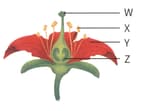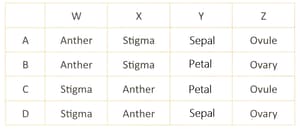Archana Shukla Solutions for Chapter: Reproduction in Plants, Exercise 6: EVALUATE
Archana Shukla Science Solutions for Exercise - Archana Shukla Solutions for Chapter: Reproduction in Plants, Exercise 6: EVALUATE
Attempt the free practice questions on Chapter 15: Reproduction in Plants, Exercise 6: EVALUATE with hints and solutions to strengthen your understanding. WOW! SCIENCE Hands-on Learning in SCIENCE 7 solutions are prepared by Experienced Embibe Experts.
Questions from Archana Shukla Solutions for Chapter: Reproduction in Plants, Exercise 6: EVALUATE with Hints & Solutions
Some flowers are pollinated through insects. For what reasons do insects visit flowers? How do the insects help in pollination?
Explain wind pollination and give explanation of why wind-pollinated flowers produce a large amount of pollen grains.
Nowadays artificial methods have been developed for vegetative reproduction. Explain the types of artificial reproduction.
Why are male and female parts necessary for sexual reproduction? Explain their presence with the help of drawing their location on a flower.
Despite having sexual reproductive parts why has nature chosen asexual reproduction in plants? While justifying your answer, give few examples also.
Grafting is a technique used to increase the numbers of a particular variety of plant. A stem cutting, from a commercially grown fruit tree, P was grafted onto the roots of a non-commercial tree Q.
a) What is the type of reproduction shown in this process?
b) If the new tree bears fruits, which variety will the fruits would be produced - commercial or non-commercial? Why?
c) List three ways to ensure that grafting in the above case is successful?
d) Which other technique, similar to grafting, can be used to increase fruit production?
A small piece of root tissue is taken from an oil palm tree and placed in a nutrient medium. Each small piece produces a new oil palm tree. What type of reproduction is this and how will the genotype of the new tree be in comparison to the parent tree?
The diagram represents a section through a flower. What are the names of the labelled structures?


